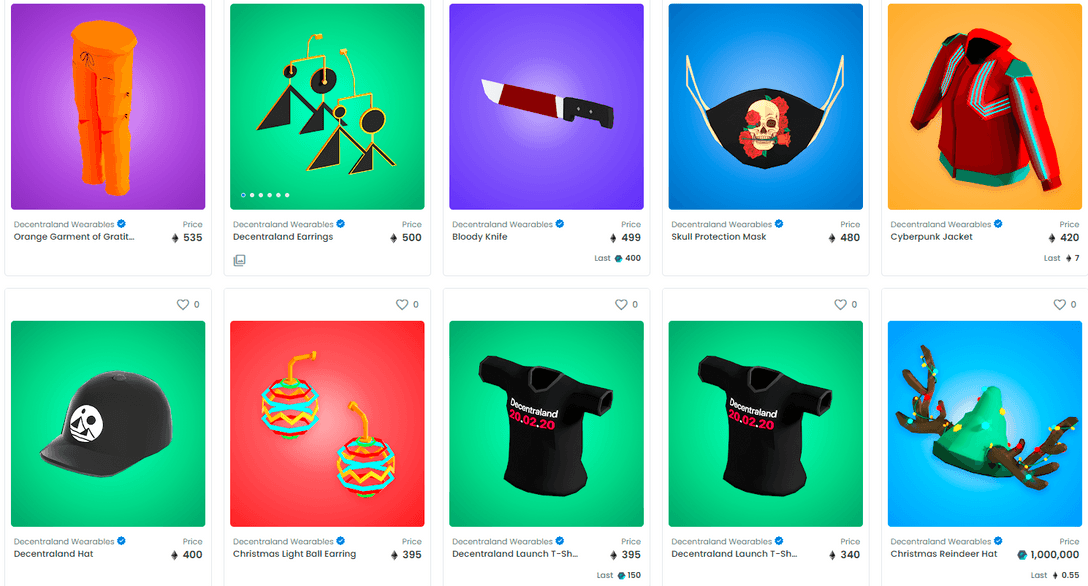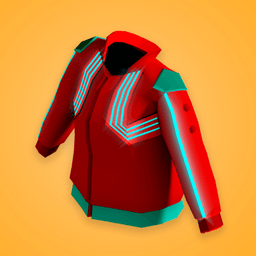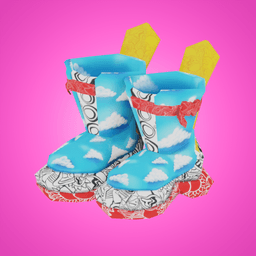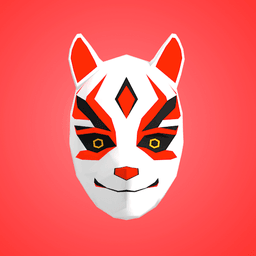A guide to understanding wearables and fashion in the virtual world of Decentraland
The virtual world of Decentraland isn’t only about art galleries and virtual museums, but also about fashion and avatars. Users have all kinds of ways to express themselves in the metaverse, and digital fashion is one of the rising trends. In this guide we take a look at what’s hot and bubbling in the Decentraland fashion industry.
The first-ever virtual world owned by its users, Decentraland can be considered one of the pioneers of the metaverse. It runs on the Ethereum blockchain, allowing its users to buy and sell digital real estate, explore, interact with each other, or play games inside this virtual world. Over time, Decentraland grew and evolved, implementing interactive apps, in-world payments, and other features.
Today, we’ll provide some insight into one of the most interesting aspects of this virtual world – fashion, also known as wearables.
What is Decentraland?
Decentraland was developed by the Decentraland Foundation, which was founded in 2015. In 2017, its team held an Initial Coin Offering (ICO), during which it raised 86,206 ETH (which was roughly $26 million at the time) to fund its future operations.
Before the Decentraland launch, the company established a decentralized autonomous organization (DAO) to hand over the project management to its users. The team also claims to have destroyed the private key controlling Decentraland’s smart contract.
This virtual world’s operations are governed by two types of tokens. The first is LAND, a non-fungible token (NFT) that defines the ownership over digital land parcels. The other is MANA, a cryptocurrency that enables purchases of LAND, and other virtual goods and services in the Decentraland.
To take part in Decentraland’s virtual world, you first need to have a user avatar. This brings us to an important question:
How to create a user avatar in Decentraland?
If you only want to explore Decentraland as a guest, you can get an avatar at no cost at all. If you want to be able to do everything else, then you’ll need to get the real deal which costs 100 MANA and a small ETH gas fee. Only one avatar per email or digital wallet is allowed, and your avatar is also an NFT.
Creating an avatar is very simple:
- First, you need to download and install MetaMask.
- Transfer enough MANA and Ethereum into your MetaMask wallet to purchase an avatar (100 MANA + a small Ethereum gas fee).
- Register an avatar on the specialized link.
- Here you’ll pick a unique name for your character and pay the required fee.
- You can also customize your character’s appearance (skin tone, bodily and facial features, clothes, accessories, etc.) or go with the randomly generated character.
- Once you’re done with creating your avatar, you can join others in the Decentraland virtual world here.
Dressing up your Decentraland avatar
If you want to make your virtual character more unique, you can customize it with Decentraland wearables. These include all sorts of clothing items, accessories, and body features (fashionable tops, bottoms, fancy costumes, tophats, sneakers, masks, glasses, earrings, cat eyes, creepy mouth, you name it).
All Decentraland wearables are NFTs and have their own marketplace, which means you can buy, sell, or trade them as NFTs on an open market. If you’re purchasing them on the official Decentraland marketplace, you can only do so with MANA. However, if you’re buying wearables on the OpenSea marketplace, then you can use MANA and ETH. Prices may vary for the same item so you might want to shop around a bit to get the best deal. Sometimes, wearables are distributed in competitions and giveaways.
On OpenSea, the prices for wearables currently range from 0.0017 ETH ($5.09 at the moment of writing) for a pair of Polygon Thunder earrings, to 1,000,000,000 MANA (close to $769 million) for a Decentraland hat.
You can design and create your own Decentraland wearables, and then have them minted and sold as NFTs. However, your design first has to be sent to a Curation Committee for approval, before it can be minted and available for use in the virtual world or for purchase in the open market. Each wearable can be minted to create multiple NFTs (or representations) of it, to a limit according to the item’s rarity.
The designed items themselves can’t be purchased or sold except as NFTs that have been minted from them. Additionally, individual items must be published as part of a collection, and not just on their own. This is because each collection has its own smart contract.
What wearables are the coolest
The Decentraland wearables are divided into six categories according to their rarity: Common, Uncommon, Rare, Epic, Legendary, and Mythic. Each category corresponds with the maximum number of tokenized wearables that can be minted per design according to the smart contract for each collection. These numbers are as follows:
- Common: 100,000
- Uncommon: 10,000
- Rare: 5,000
- Epic: 1,000
- Legendary: 100
- Mythic: 10

Each wearable of a specific design has its mintage number shown beside it in the marketplace, marking the order in which it was minted. The lower the number, the earlier the item was minted in relation to others of the same design. For instance, if a wearable, say a Coca-Cola T-shirt, has a mintage number of 4/10, it means that it was the fourth one to be minted among a total of 10 Coca-Cola T-shirts. Typically, the earlier an item was minted, the higher value users assign to it.
To make it easier to discern, each category is marked by a different background color in the Decentraland marketplace and the Avatar Editor mode, as follows:
- Common: grey
- Uncommon: orange
- Rare: green
- Epic: blue
- Legendary: purple
- Mythic: pink
Hence, wearables from the Mythic (pink) category are the coolest ones to own, even more so if they have a low mintage number. This is also what makes them a potentially interesting investment in the long run.
In addition it shouldn’t be a surprise that users can collect sets. Combine shoes, pants, a shirt, hat and some other decorations, and you will have a complete set. There are sets based on world events, for example Halloween, while other sets have been designed by either companies or designers.
Below some of the most recent top selling wearables, and their prices. Click on them to see more details about these NFTs.
Wearables open a world of opportunity
Just like in the physical world, people care what they wear in a virtual environment. We are all unique, and so should be our avatars. This is why most people also want them to represent their specific sense of style, to separate them on a higher level from the other participants in Decentraland.
This opens a whole lot of opportunities for anyone involved. Users can express their individuality, designers can earn money off their creations, and investors can grow their investments. At the same time, all of them can communicate and interact with each other, explore the virtual world, and simply have fun.
In recent months we’ve seen fashion shows, but also NFT artists designing shoes and then selling both physical and NFT version of those sneakers. Amsterdam-based fashion company The Fabricant is working only with digital fashion, while Boson Protocol is creating the Shopify for NFT and physical fashion. Digital fashion is on the rise, and we at DappRadar are keeping a close eye on these developments.
- Bitcoin
- blockchain
- blockchain compliance
- blockchain conference
- coinbase
- coingenius
- Consensus
- crypto conference
- crypto mining
- cryptocurrency
- DappRadar
- decentralized
- DeFi
- Digital Assets
- ethereum
- machine learning
- non fungible token
- plato
- plato ai
- Plato Data Intelligence
- PlatoData
- platogaming
- Polygon
- proof of stake
- W3
- zephyrnet











